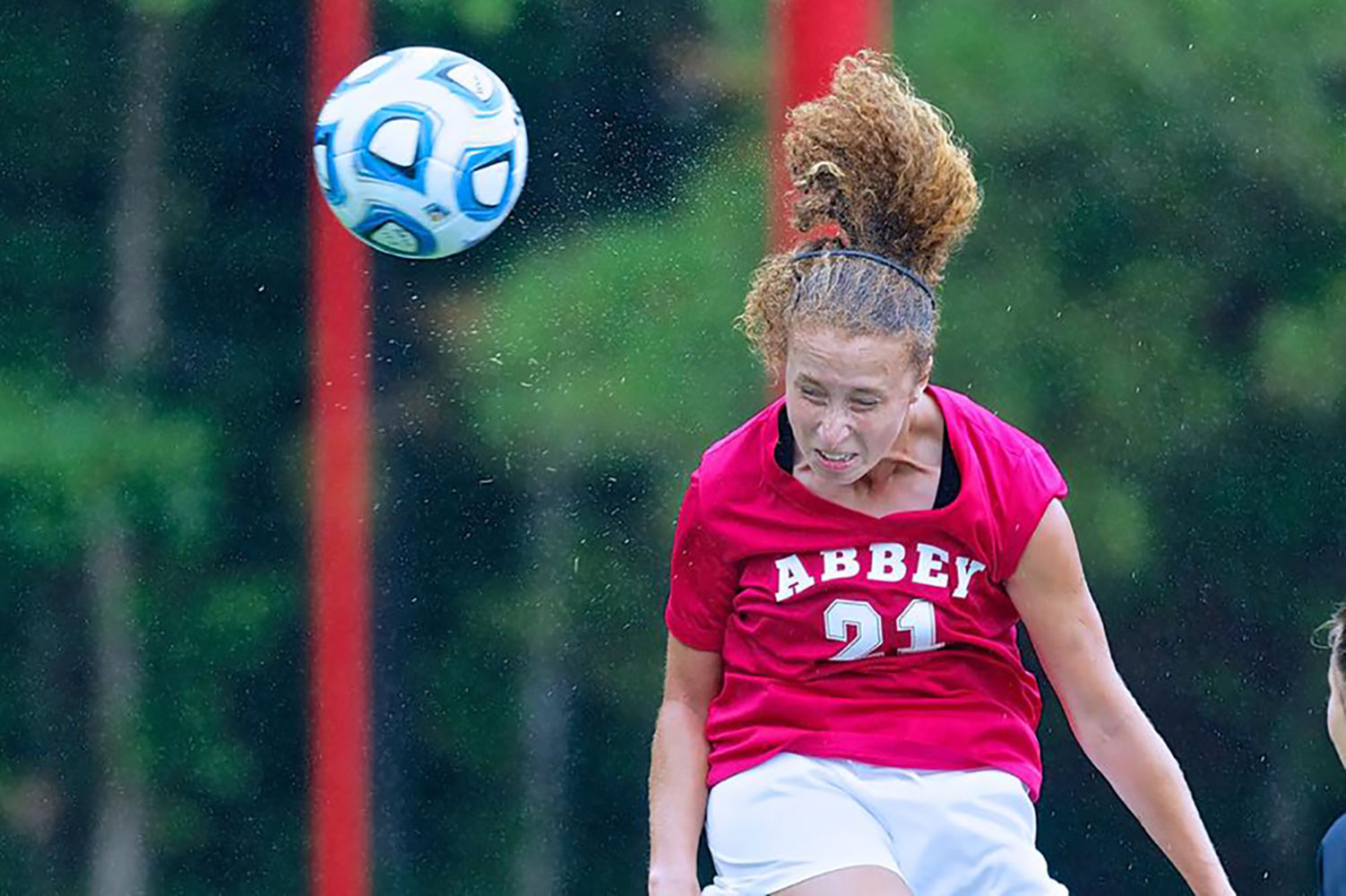
Military museum, fire taxes approved by Terrebonne voters
November 25, 2015
Boil water advisory for North Lafourche
November 30, 2015The United States Soccer Federation is taking drastic action to try and remove the header from the sport at youth levels of competition.
Local soccer coaches, players and enthusiasts seem to have the same opinion about the change. They believe that doing so is a big-time mistake that will hurt the game more than it helps.
The push for change comes as a resolution to a lawsuit filed in August 2014 against U.S. Soccer, the U.S. Youth Soccer Association, the American Youth Soccer Organization, U.S. Club Soccer and the California Youth Soccer Association. The suit alleges that the header is a dangerous play and is the cause of hundreds of concussions in young players each year.
As per terms of the lawsuit resolution, the U.S. Soccer Federation is now recommending that organizations ban the header from competition for players ages 10 and younger. The governing body also now recommends that the play be banned from practice for children ages 11-13, but not in games. Locals say the recommendations, which the U.S. Soccer Federation is “strongly advising organizations to follow” are too deep-rooted and that the push, which is being done in an effort to make the game safer, may not make the game any safer to play.
In addition to the header changes, the resolution also includes new recommended substitution patterns for the game.
“We need to consider player safety. There’s no doubt that that should be our No. 1 priority,” Vandebilt Catholic girls soccer coach Philip Amedee said. “But with that said, the problems we have already is that kids aren’t taught to head the ball properly. And now that we’re not starting that teaching process until later, I think it’s going to make kids hesitant to head it, which will make them more susceptible to injury and being hurt.”
“The way I grew up, heading was part of the game,” added former longtime Vandebilt boys coach and current Houma-based youth soccer coach Matt Kelso. “It’s technique. If you’re technically sound in what you’re doing, heading shouldn’t be a problem. In any contact sport, there’s a risk, and I think it’s something being done for litigation, but will ultimately set the sport back. I wish that they would have done more to try and keep things as they were, but focus on better teaching.”
CONCUSSION DEBATE SPARKS ARGUMENT
The debate which sparked the rule change reached its peak with the lawsuit, which was filed in California last year by lead plaintiff Rachel Mehr, who played soccer throughout her youth.
Money was never part of the lawsuit, but plaintiffs sought payment for their legal fees and change to the rules which guided the sport.
According to doctors and medical research, there are more than 2 million concussions in the world every year – a large majority of which occur during athletic competitions. A concussion is defined as a brain bruise, which occurs when the head is jarred hard enough to cause the brain to slam into the skull. When mild, symptoms can be as light as a slight headache or blurred vision. If more severe, a person may black out or experience permanent memory loss. The worst injuries can even result in death.
“Concussions are a serious, serious thing,” said Larry D’Antoni, Thibodaux Regional Medical Center Coordinator of Sports Medicine. “It’s, of course, become a hot-button topic in the past few years, but they’ve been around as long as there have been sports. Prevention, education and proper diagnosis of them are critical and key in any situation.”
For young men, football remains the leader in concussions. But for women, soccer is on top with almost 50 percent of female players who play for 10 or more years likely to have at least one concussion in their careers, according to statistics offered by the U.S. Soccer Federation.
The play which takes the brunt of the blame for that is the header, which is when a player jumps in the air and strikes the ball with his/her head in an effort to either pass it to one’s teammate or attempt to score a goal.
From its onset, the lawsuit was specific in its desire to remove or curb the play. The plaintiffs said it was the leading cause for concussions in the sport, because of how quickly the ball is traveling at the time it makes contact with a player’s head – speed that the U.S. Soccer Federation claims can be in excess of 70 mph.
Locals don’t agree.
Belmont Abbey senior striker Meghan Philp is an All-Conference performer – one of the best offensive players in her level of collegiate soccer. She is also a Houma native, who started her career at age 3 in the playing fields that local children share today.
Philp said that in her 18-plus-year career, she’s never been concussed, and she’s never experienced any type of head injury. She said the reason why is because she learned how to properly do a header at a young age – something Philp believes will be lost if youth organizations follow the recommendation.
“I don’t agree with what’s going on,” Philp said. “Maybe it’d be OK for kids who are very small and are scared of the ball, but in my experience, if I didn’t head at a young age, I wouldn’t be as good or know how to protect myself like I can now when I am on the field.”
Coaches agree.
Kelso said in his decade with Vandebilt as both a head coach and assistant coach, he can only remember one player being treated for concussion-like symptoms.
“Not at all,” he said quickly when asked if it was a problem. “It wasn’t something we dealt with often.”
Amedee, who coaches at both the prep and youth levels, said he’s seen a few, but no more than one a year – a number he said isn’t bad considering that he works with several dozens of players a year.
The coach said the problem with the ruling in his eyes is that it won’t be effective. Amedee said in his experience, a lot of the sport’s head injuries occur in non-header activities.
Stats back up Amedee’s claim. A study cited in a story on NPR.org in July said that collisions, not headers, are the cause of 69 percent of concussions in boys soccer and 51 percent of concussions in girls.
“I want to see the numbers,” Amedee said. “I’ve seen the stories and the headlines that say how bad it is, but stats show just as many concussions are happening in other phases of the game.”
NO PRACTICE? BIG PROBLEMS
Philp said she learned how to head when she was 3.
“My father had me heading in my backyard,” Philp said. “It didn’t take too much time to learn the proper method, because I was a fast learner.”
Today, she is an elite goal scorer who uses her dome to create offense that wins collegiate games.
“I practiced it growing up,” Philp said. “I practiced it and did it the way you’re supposed to do it over and over.”
Former collegiate soccer standout Rachel Yepez feels the same. Like Philp, she, too, said she learned the skill at a young age. She said she mastered it, then never had worries about doing it in a game. Yepez was an All-American at LSU, who could have played professionally if she chose to do so.
“I believe that if you’re doing it the right way, then it’s not as big an issue as it’s being presented to be. It’s like anything else – if you don’t follow the instructions on the instruction sheet, you’re asking to get hurt. It’s the same with heading. If you do it the way it’s supposed to be done, it’s not a big deal.”
The proper technique for performing the common soccer skill is follow the ball with your eyes as it soars in the air. Once the ball is about to make contact, players are coached to jump in the air and strike the ball with their forehead – the segment of the skull which is both the thickest and also which doesn’t directly touch the brain.
If the technique is not done properly and the ball strikes the crown or back of someone’s head, concussions are far more common. Likewise, if a ball strikes a player’s nose or mouth, severe damage can be done, as well.
“It’s a technique-driven skill,” Kelso said.
The way it’s perfected is through practice, which is why most oppose the new recommendations. Philp said she believes that if players don’t begin heading until they’re 11, they’ll never properly learn the skill. In her eyes, this will place all players in more danger than they are now, because they’ll attempt the play in the heat of the game without the proper training and will be more prone to injury.
Amedee and Kelso took it a step further. Both coaches said that they strongly disagree with the listed recommendation that the header should be banned from practice for ages children 11-13, but that it’s still allowed in the game.
“You can’t practice it, but you’re going to do it in the game?” Kelso said. “You’re asking for trouble. You’re asking for big trouble.”
“How in the world can we expect kids to execute something if they aren’t allowed to practice it?” Amedee said. “We, as coaches, have a responsibility to teach the proper techniques, and if they’re allowed to do it in the games, but we can’t coach it in practice, then our hands are tied.”
EVEN U.S. SOCCER NATIONAL TEAMS MAY BE IMPACTED
The decision to try and oust the header comes at a time when soccer is as popular as its ever been in our nation.
TV ratings for the sport are at an all-time high, and countless studies have shown that youth soccer participation continues to gradually climb.
While more kids have played the sport in the past three decades, the United States National Teams have reaped the benefits and have become more competitive. The U.S. Women are among the best in the world – year-in and year-out favorites to hold the title of the world’s best team. The American men aren’t quite at that level, but have solidified their place as a consistent Top 20 team in the world – a big step forward in the history of a team which hasn’t had much success.
But will that success be sustained and long-lived? Kelso wonders.
A native of the United Kingdom where soccer is wildly popular, Kelso said he closely follows the game internationally. Kelso conceded that the U.S. National Team is better now than it was during his childhood.
“There’s no doubt about that push they’ve made,” Kelso said.
But he thinks that rules like these will bring that progress to a halt. Kelso said the United States has the most athletic players in the world. But he said the reason the team doesn’t win big internationally is because of technique – or lack thereof.
Kelso said efforts to dumb down the sport will only make things worse. He said if these regulations stick, they will have lasting impacts on Team USA in the future.
“Where are the technically astute kids these days?” Kelso asked. “Soccer is technique and that’s where the U.S. is already lacking compared to the rest of the world. We should be bringing in attention to detail, not eliminating it. This is going to have an impact on the American teams. To me, there’s no doubt about it.” •
Houma native and Belmont Abbey senior striker Meghan Philp rises through the air to head a ball during a match this past season. The United States Soccer Federation announced two weeks ago its plan to make soccer safer after a concussion-related lawsuit filed in California. Included in the plan is a recommendation to ban headers from youth matches for children ages 10 and under, as well as a practice ban for children ages 11-13.
















